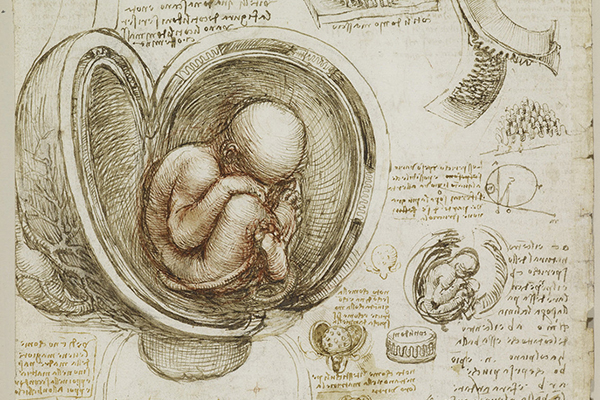Graphic Intelligence
DOI:
https://doi.org/10.15168/xy.v1i2.30Abstract
In this paper is presented and discussed the hypothesis of a particular form of intelligence, in the context of the theories on the multiple intelligences: the “graphic intelligence”, intended as the capacity to use the drawing skills and, more generally, the ability to integrate the use of eye, mind and hand to solve problems and to create effective products aimed to acquiring new knowledge. Indeed, the recent research from the cognitive sciences suggests the existence of meaningful relationship between graphic representation and cognitive development that could support the idea of a graphic intelligence autonomous from other forms of intelligence which have until now been considered capable of describing and comprehend this type of human intellectual competence. Thus, the graphic intelligence could be equally confronted with the most common linguistic and logical–mathematical intelligences, on which nowadays school tends to focus, and it could complete and enrich the already investigated visual and spatial intelligences. Thinking of the graphic skills as form of intelligence obliges to turn the attention not on the product but on the “cognitive process” that led to the elaboration of that product. This means a change of perspective able to suggest new approaches to teaching at all levels and in all the fields of education.
References
ARNHEIM, R., 1969. Visual thinking. Berkeley: University of California Press, pp. 348.
BALDASSO, R., 2006. The Role of Visual Representation in the Scientific Revolution: A Historiographic Inquiry. Centaurus. 48, 2006, pp. 69–88.
BREDEKAMP, H., 2001. Gazing hands and blind spots: Galileo as draftsman. Science in Context. 14 (1), 2001, pp. 153–192.
BUTTERFIELD, H., 1954. Renaissance Art and Modern Science. University Review. 1, 1954, pp. 25–37.
CERVELLINI, F., 2016. Il disegno come luogo del progetto. Ariccia: Aracne editrice, pp. 266.
CROSS, A., 1986. Design intelligence: the use of codes and language systems in design. Design Studies. 7 (1), 1986, pp. 14–19.
EDGERTON, S.Y. Jr., 1984. Galileo, Florentine “disegno”, and the “strange spottednesse” of the moon. Art Journal. 44 (3), 1984, pp. 225–232.
FATTA, F., 2016. Science and art between time and place: six points of view. XY. 1, 2016, pp. 44–56.
FERGUSON, E.S., 1977. The mind’s eye: Nonverbal thought in technology. Science. 197 (4306), 1977, pp. 827–836 (doi: 10.1126/science.197.4306.827).
GARDNER, H., 2015. Formae mentis. Saggio sulla pluralità dell’intelligenza. Milano: Feltrinelli, pp. 591 (ed. or. 1983, Frames of mind. The theory of multiple intelligence. New York: Basic Books, pp. 440).
GIANDEBIAGGI, P., 2016. Drawing: creative expression. XY. 1, 2016, pp. 98–108.
GOLDSCHMIDT, G., 1991. The dialectics of sketching. Creativity research journal. 4 (2), 1991, pp. 123–143.
JAMNITZER, W., 1568. Perspectiva corporum regularium. Nuremberg. Citato in BREDEKAMP, H., 2001, op. cit.
LASEAU, P., 2001. Graphic thinking for architects and designers. London: Wiley, pp. 246.
LATOUR, B., 1990. Drawing things together. In LYNCHM, M., WOOLGAR, S. (Eds), Representation in scientific practice. Cambridge, MA: MIT press, pp. 19–68.
MASSIRONI, M., 1982. Vedere con il disegno. Padova: Franco Muzzio Editore, pp. 189.
NELMS, H., 1964. Thinking with a Pencil. London: Bernes & Noble, pp. 346.
PALLASMAA, J., 2009. The thinking hand: Existential and embodied wisdom in architecture. Chichester: Wiley, pp. 160.
PIAGET, J., INHELDER, B., 1948. La représentation de l’espace chez l’enfant. Paris: Presses Universitaires de France, pp. 581.
ROBERTSON, I., 2003. Opening the Mind’s Eye: How Images and Language Teach Us How To See. London: St. Martin’s Press, pp. 288.
SCHON, D., 1983. The Reflexive Practitioner. New York: Basic Books, pp. 384.
SMITH, I.M., 1964. Spatial ability: Its educational and social significance. London: University of London Press, pp. 408.
TREIB, M. (Ed.), 2012. Drawing/thinking: confronting an electronic age. London: Routledge.
VAN SOMMERS, P., 1984. Drawing and cognition: Descriptive and experimental studies of graphic production processes. New York: Cambridge University Press, pp. 284.
VERSTIJNEN, I.M., HENNESSEY, J.M., 1998. Sketching and creative discovery. Design studies. 19 (4), 1998, pp. 519–546.
VIVIANI, V., 1890–1909. Racconto istorico della vita del Sig. Galileo Galilei. In FAVARO, A. (Ed.), Opere di Galileo.
Firenze: Barbera, vol. 19, pp. 597–646. Citato in BREDEKAMP, H., 2001, op. cit.


